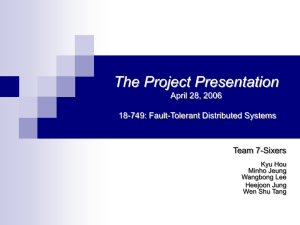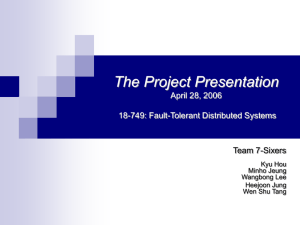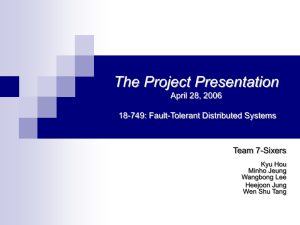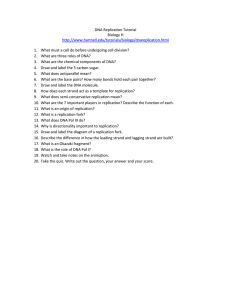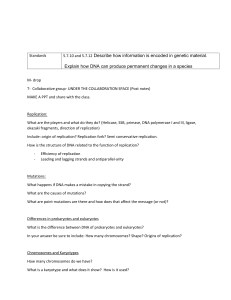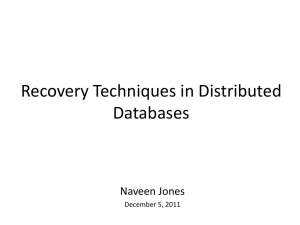The Project Presentation April 28, 2006 18 -
advertisement
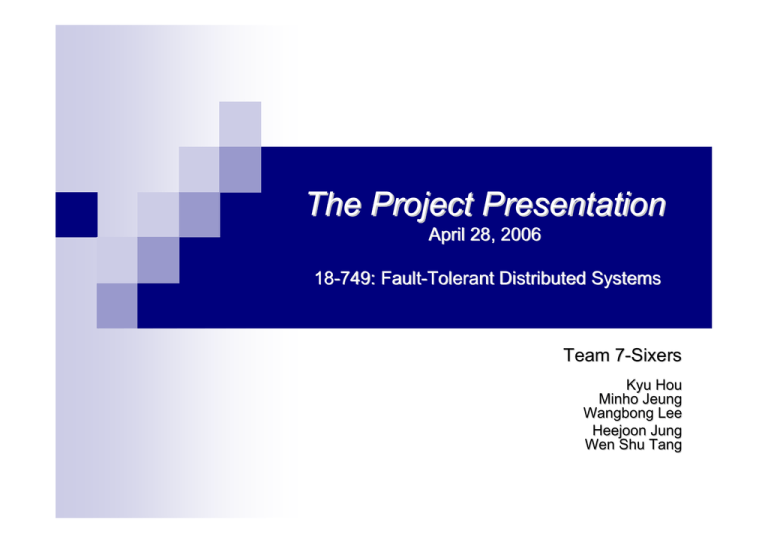
The Project Presentation April 28, 2006 18-749: Fault-Tolerant Distributed Systems Team 7-Sixers Kyu Hou Minho Jeung Wangbong Lee Heejoon Jung Wen Shu Tang Members Kyu Hou Wen Shu Tang Wangbong Lee kyuh@andrew.cmu.edu MSE wtang@andrew.cmu.edu ECE wangbonl@andrew.cmu.edu MSE Min Ho Jeung mjeung@andrew.cmu.edu MSE Heejoon Jung wangbonl@andrew.cmu.edu MSIT-SE http://www.ece.cmu.edu/~ece749/teams-06/team7/ 2 Baseline Application Express Bus Ticket Center Application Online express bus ticketing application Configuration • • • • Operating System: Linux servers Programming Language: Java Database: MySQL Middleware: CORBA Baseline Application Feature • • • Users can retrieve bus schedules and tickets. Users can buy tickets. Users can cancel the tickets. 3 Baseline Architecture (before) Allocation View-Deployment Style ① ② ① Database ④ ④ ③ Bus Ticket System Pool of Customers Legend Client Server Internet Database Request message Response messageRequest Query Response Query 4 Baseline Architecture (after) Allocation View-Deployment Style ① User Client Interface CORBA Interface ④ Pool of Customers Server Business CORBA Logic Interface JDBC ② MySQL ③ Bus Ticket System Database Legend Client Server Database Request Message Response MessageRequest Query Response Query 5 Fault-Tolerance Application Client requests should be preserved, when exception is occurred. Replication There are 2 copies of server which perform same operations for faulttolerance on the chess and risk machine. Replication Type Active Replication Advantage: Performance Disadvantage: More memory and processing cost Replication Manager No specific replication manager exists. As soon as client application begins, the application acquires the replication server name which is stored in Naming Server. Elements of Fault-Tolerance Framework Global Manager: Heartbeat Recovery Manager Re-instantiating a failed replication The recovery result is written into a log file in Database. Fault injector: Shell 6 FT-Baseline Architecture Scenario 1. Client requests the names of server to the naming server. 2. The naming server sends the names of servers. 3. Client requests to all servers. a. When the client receives an exception message, then the fault is detected. b. The client already communicates with another replication server. 4. All servers send the results to clients. 5. Client receives the results, and checks duplication. 7 Mechanisms for Fail-Over Exception Cases Server_Timeout Checked by using thread pool Database_Timeout: Checked by using connection pool Dead_Server Solved by using heartbeat (check servers per 2 seconds) Global Recovery Manager: Heartbeat Performance measurement 48 Configurations Buy and cancel ticket 9 us Performance measurement Performance measurement Performance measurement Performance measurement Fault Injection measurements 1 Client 1000 requests Cancel ticket request Performance measurement comparison RT-FT Baseline Architecture Active Replication 16 RT-FT Performance Strategy Thread Pool We need to avoid the overhead of thread creation for each request. Create a number of threads at initialize time Without Thread Pool AVG RTT: 40.5 msec With Thread Pool Dynamic configuration AVR RTT: 38.0 msec Improve the performance about 4% 17 RT-FT Performance Measurement Thread Pool / No Thread Pool 18 Other Feature List other features Fault Injector – Shell Script Log4j – Logging information Apach DB Connection Pool (DBCP) What lessons by other features? Useful utilities Improve performance by DBCP Powerful shell scripts 19 Insights from Measurement FT Measurement File I/O for logging time grows as the a file size increases RT-FT Measurement No RTT difference between fault-free and faultinjected test cases Duplicated values reach the client almost at the same time. RT-FT Performance Measurement Thread creation time is not trivial when the number of replica increase Need more test cases 20 Open Issue Issues Test environment How to set up same test environment for each test case. How to decide test environment is good enough to get the meaningful data. Additional features Load balancing for active replication Organizing active replication group Passive replication for each group 21 Conclusion What did we learn? Handling thread Data gathering and analyzing Useful open source program What did we accomplish? Apache project :log4j, dbcp succeed to build active replication system If we could start our project again, focus on only FT features 22
